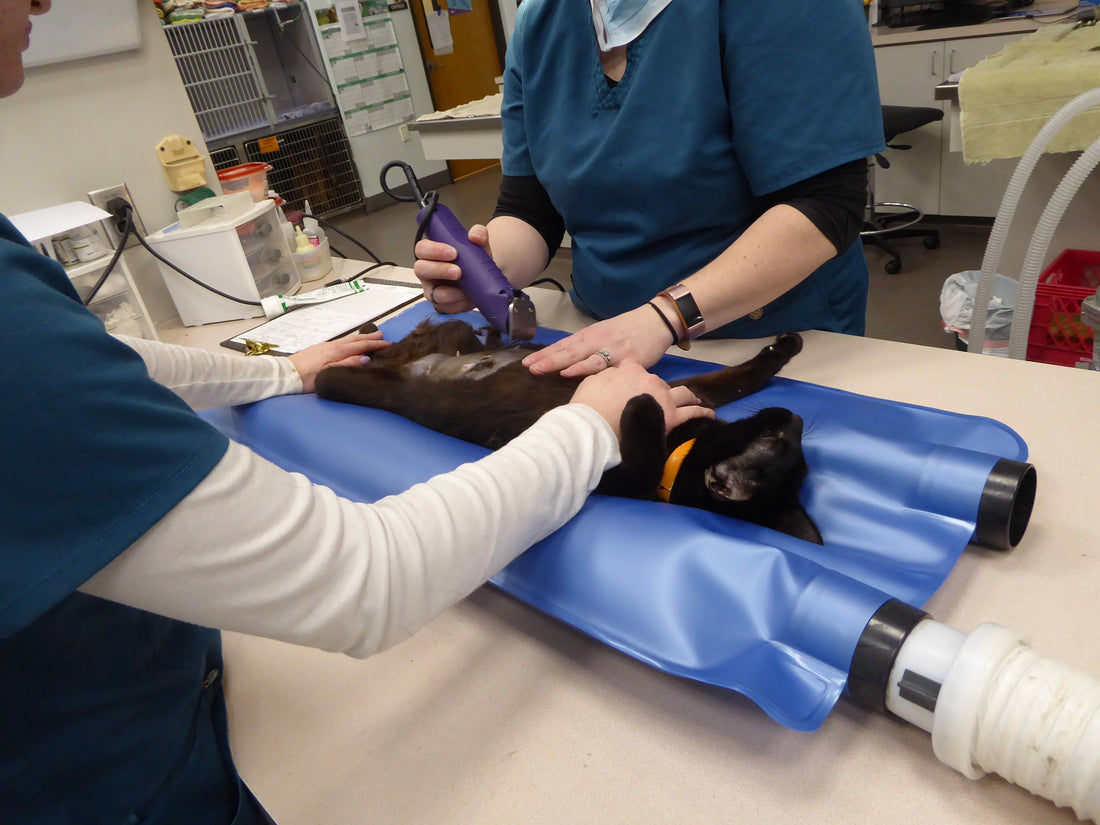Did you know that for every minute of delay between preoperative and intraoperative warming, there can be a drop in core body temperature of 5%? Check out our 6 tips to optimize intraoperative patient warming:
#1 Minimize Patient Warming Delays
Minimize the delay between pre-operative and intra-operative warming. The heat stored in the peripheral compartment from your pre-operative warming is very transient. For every minute of delay, there's a drop in core body temperature of 5%.
Browse VetORSolutions Warming Pads
#2 Actively Warm Large Surface Areas
Use active warming on as large a body surface area as possible. Over-body warming in non-sterile areas like the chest when performing an abdominal procedure, is usually inadequate. The underbody surface is the largest area available for patient warming and is the most efficient for intraoperative warming.
Previously forced-air warming over the patient was the primary method of patient warming. Innovations in patient warming technology with the award-winning HoverHeat Warming Pad now levitate the patient to provide for low resistance warm airflow underneath the entire body of the patient. This increases the warming capacity of your current warm air blower by 50 to 75 percent.
#3 Use Thermal Blankets
Your patient loses body heat by conduction, convection and radiation. Your patient will lose 81 percent of the heat loss in the first 30 to 60 minutes after anesthetic induction that it will ultimately lose during the course of that anesthetic, unless you intervene. The ConRad Thermal Blanket is a very effective intervention. Retain the heat coming from the patient and your active warming device by using the ConRad thermal retention blanket.
Browse VetORSolutions Thermal Blankets
#4 Warm Fluids
Warm IV fluids for long surgical cases by either warming your Iv fluids prior to infusion or utilizing an inline IV fluid warmer
#5 Warm Surgical Irrigation
When performing an abdominal procedure, irrigate the abdomen at least three times with warm surgical irrigation. This transfers the heat to the mesenteric and the intra-abdominal blood vessels.
#6 Room Temperature
Keep your room temperature at 68 to 72°F if the surgeon can tolerate it.
Quick, take away: Minimize the delay between preoperative and intraoperative warming and provide effective intraoperative warming
Contact us to learn how VetORSolutions’ warming systems can help to optimize patient body temperature during surgical procedures.

